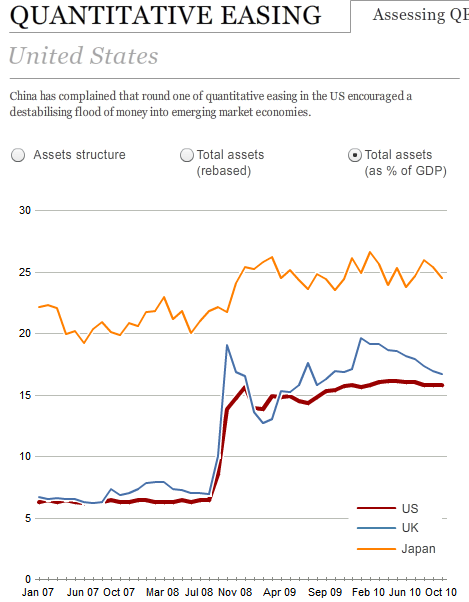Contents:


The several benefits that accompany this ratio make it one of the most efficient financial tools to measure a firm’s liquidity. On the other hand, a ratio equal to 1 may be deemed safe as it does not signify any major liquidity-oriented concerns. Generally, a higher current ratio is considered to be better.
- In the below section, we will take a look at liquidity ratio examples and related real-world case studies to understand them better.
- To make sure you are not studying endlessly, EduRev has designed Commerce study material, with Structured Courses, Videos, & Test Series.
- So, you cannot compare the current ratio of TCS with Avenue Supermarts Ltd.
The current ratio assesses a company’s capacity to settle short-term debt or obligations due within a year. Quick ratio is a more stringent measure of liquidity than the current ratio because it does not include inventories and other assets that might not be liquid. It includes only more liquid current assets (known as ‘quick assets’) in relation to current liabilities. The higher the quick ratio, more likely it is that the company will be able to pay its short-term bills (i.e., greater liquidity). On the balance sheet, you will readily find current assets and liabilities recorded and accounted for separately. You can pick the values and insert them into the formula to calculate the current ratio.
Consequences of higher and lower current ratio
An exceptionally high current ratio means that the company is hoarding cash. However, the ideal current ratio lies between one and three. Let us calculate the current ratio of Tata Consultancy Services Ltd for the year ending 31st March 2021.
Liquidity ratio analysis can be defined as the measurement of the short-term solvency of a company. Let us take a real-life example of two companies ABB and Rockwell. While the spectrum of a good current ratio differs basis the exact industry type, a ratio between 1.5 and 3 is considered healthy.

However, a current ratio of 2 or more is generally considered to be high. This means that the company has twice as many current assets as current liabilities. If current assets exceed current liabilities, i.e., the ratio is higher than 1.0, it indicates the ability of a corporation to meet its obligations. It may also imply that the company is optimally using its current assets or managing its working capital satisfactorily. It not just serves as a vital financial metric but also enables both businesses and stockholders to make informed decisions regarding investments. It’s a ratio that tells one’s ability to pay off its debt as and when they become due.
Free Stock Market Courses to Learn Everything About Investing and Trading
A company can improve its current ratio by increasing its current assets, decreasing its current liabilities, or both. This can be achieved through strategies such as improving collections on accounts receivable or negotiating better payment terms with suppliers. Typically, it is a financial metric that enables investors and stockholders to assess a firm’s ability to pay off its immediate liabilities with its current assets.
A current ratio of 1 or more is generally considered to be good. However, a current ratio of 2 or more is typically seen as high and may indicate that the company is holding excess cash or other short-term assets. The current ratio does not account for long-term liabilities or assets of different nature. As a result, this ratio cannot give an accurate picture of a company’s total assets or liabilities. The current ratio is used by creditors, analysts and investors to determine if a company can fulfil its short-term obligations. Current ratio accompanies no immediate liquidity concerns, it may not always paint a favourable picture of the company among investors.
Liquidity ratio examples:
Whereas cash ratio only includes cash and cash equivalents as assets. It tells you whether a company has enough liquid assets to pay its short-term debt. The current liquidity ratio is the financial ratio of current assets to current liabilities.
StockNews.com Analysts Begin Coverage of NuVasive and Issue … – Best Stocks
StockNews.com Analysts Begin Coverage of NuVasive and Issue ….
Posted: Fri, 05 May 2023 18:49:58 GMT [source]
Current ratio of a company selling highly non-durables has wide fluctuations. Current assets include prepaid expenses, advance received etc. which is not real cash. But Reliance Industries is financially stronger in the short-term.
Meanwhile, it has Rs 1,00,000 in accounts payable as current liabilities. By dividing the company’s current assets by its current liabilities , one may determine that it has a current ratio of 1.5. To calculate the current ratio, divide a company’s current assets with its current liabilities. Measurement of liquidity is an integral part of any company’s financial statement analysis. It demonstrates a company’s ability to overcome short-term financial obligations. To evaluate a company’s liquidity, company leaders can calculate the ratios based on information found on the company balance sheets.
Current Ratio
In other words, liquid ratio compares the current assets with the current liabilities. If the current assets are more than the current liabilities, it means that the firm is able to pay its short term debts by liquidating its current assets. Relative liquidity is metric that measures a company’s ability to pay near term expenses. The degree of relative liquidity is the same as the current ratio. Both of them measure a company’s ability to use cash flow or asset’s to satisfy short-term liabilities that may arise in near future.
Los Angeles Capital acquires stake in Medical Properties Trust and … – Best Stocks
Los Angeles Capital acquires stake in Medical Properties Trust and ….
Posted: Sat, 06 May 2023 03:17:39 GMT [source]
A higher ratio often indicates greater liquidity and more stability. The modus operandi observed is that once a client pays amount to them, huge profits are shown in his account online inducing more investment. However, they stop responding when client demands return of amount invested and profit earned.
This ratio pits cash, equivalents, and marketable securities against current liabilities. Businesses should always strive for achieving an absolute liquidity ratio of 0.5 or higher. This formula comprises the most liquid assets and high liquid assets in the numerator and hence tends to be more accurate while carrying out liquidity ratio analysis and interpretation. While the current ratio can be useful for evaluating a company’s financial health within its own industry, it may not be as useful for comparing companies across different industries.

These assets can be in the form of gold, cash, or securities that are approved by the Indian government. A well-established business must have a steady cash flow to remain profitable. The liquidity ratio determines if the company is making a profit or not. The current ratio indicates the availability of current assets in rupee for every one rupee of current liability. A ratio greater than 1 implies that the firm has more current assets than a current liability. The current ratio is estimated by dividing the current assets by current liabilities.
A company’s financial stability is also dependent on its management. Considering this ratio can help a company optimize its management efficiency. The management can work towards the betterment of its working capital requirements. A low current ratio may indicate that the company is having difficulty meeting its short-term obligations. This can be a sign of financial distress and may impact the company’s creditworthiness.
Metis Global Partners Increases Holdings in Dover Co. by 109.6 … – Best Stocks
Metis Global Partners Increases Holdings in Dover Co. by 109.6 ….
Posted: Fri, 05 May 2023 17:35:22 GMT [source]
The current ratio poses a problem for companies with seasonal revenues. It may indicate a lower ratio in some months and higher in others. A current ratio higher than the industry’s average can be deemed satisfactory. Any ratio lower than the industry average may signify a risk of default. With respect to the current ratio vs quick ratio debate, listed below are some of the key differences that you should know. The financial tool helps to understand a firm’s working capital requirement more effectively.
CAs, experts and businesses can get GST ready with Clear GST software & certification course. Our GST Software helps CAs, tax experts & business to manage returns & invoices in an easy manner. Our Goods & Services Tax course includes tutorial videos, guides and expert assistance to help you in mastering Goods and Services Tax. Clear can also help you in getting your business registered for Goods & Services Tax Law.
Let’s assume that the quick assets of the company are represented by ‘1.2x’. Pay 20% upfront margin of the transaction value to trade in cash market segment. Please ensure you carefully read the risk Disclosure Document as prescribed by SEBI.
- Majority of its assets are in the form of cash and bank balance.
- A current ratio of 1 or more is generally considered to be good.
- A current ratio of more than three can reflect under-utilisation of assets.
- The current ratio measures a company’s current assets against its current liabilities.
- Current assets are assets which are readily available or can be converted into cash within 12 months.
These liquid assets are marked as current assets in the balance sheet of the company, for the purpose of accounting. This ratio measures whether a company is able to meet its obligations from the cash flow generated out of its operations. Decrease in current assets and increase in current liabilities increases cash flow from operations.
The below graph shows the average current ratios of 2/3 wheelers, banks, refineries and the personal products sector. Liquidity ratios are essentially solvency ratios, meaning if a company does not meet the ideal liquidity ratio requirement, it may teeter on the edge of bankruptcy. Overall, it is certain that the Current Ratio, when used along with other financial metrics, can track a company’s financial stability and security. It is useful for business owners, decision-makers, stakeholders, and prominent members of a business to understand the company’s finances, especially the short-term ones, successfully.
current ratio is equal toly, the current ratio of a company should be more than 1. Anything that’s less than 1 would mean that the company lacks the necessary assets to pay off all of its liabilities if they ever fall due. Current ratio analysis, the concept of ‘good’ current ratio depends entirely on the context of a firm and its competitors, in which they are analysed. There can also be a big gap between sales and actual receipt of cash. Hence, the current ratio does not work in companies with huge inventory. IDBI Bank and Punjab National Bank have very high current ratios.
There are three main indicators of liquidity – absolute liquidity, urgent liquidity, and current liquidity. If you are curious to know the components of short-term assets and short-term liabilities, you should read our articles on Current Assets and Current Liabilities. ● If the method of valuing inventory changes, so does the ratio. And this has very little to do with the actual financial status of the firm. ● It helps the decision-makers of a company with the best investment strategies. Both variables can be obtained from the balance sheet of a company.
